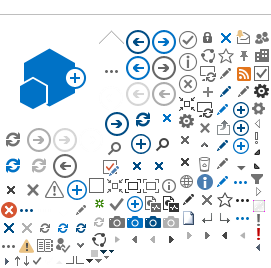Greg, Instead of just listing features, can we explain how each facility helps researchers achieve their goals? Or can we showcase how the facilities have been used for groundbreaking research or successful projects?**
The Model-812 Irradiator is part of the Nuclear Science User Facility's (NSUF) and can be made available for the exploration of basic and applied nuclear research via their funding opportunities.
The Nordion Gammcell—also available via the NSUF—is reserved for low-dose rate (~30 Gy min–1) irradiations and provides the niche capacity to irradiate radioisotope samples.
Facilities
Energy Innovation Laboratory (EIL) Irradiation Suite
Located in the Research and Education Campus, the
EIL Irradiation Suite supports research activities requiring steady-state gamma irradiation by providing access to a high dose rate (≤ 350 Gy min–1) Foss Therapy Services Model-812 Cobalt-60 Gamma Irradiator. The Model-812 is a self-contained device that offers a large sample chamber (over 9 liters with dimensions of __ × __ × __) with two external access ports and several sample racks and turntables, providing significant flexibility to suit your experimental needs. For example, the access ports can be used for the installation of our bespoke high temperature (≤ 200°C) irradiation cell (JACY REFERENCE) coupled with fiber optics cables for in situ spectrophotometric monitoring, or an integrated electrochemical cell setup to provide real-time current measurements and in-line gas sampling.

Here goes your text content. The text will be positioned to the left of the image.
In addition to our gamma irradiation capabilities, the
EIL Irradiation Suite also offers access to Luzchem LFP-412/422 laser photolysis transient absorption and diffuse reflectance spectrometer. Our laser flash photolysis setup, which may be used with a temperature-controlled flow-through sample cell, allows for the characterization of transient species with lifetimes > 10 ns.
The
EIL Irradiation Suite has direct access to an Agilent Cary 60 UV-vis Spectrophotometer and a Bruker ESR5000 Electron Paramagnetic Resonance Spectrometer. These techniques are further augmented by an extensive array of analytical equipment and expertise located throughout the EIL to support a wide range of sample analyses.
Materials and Fuels (MFC) Complex Irradiation Suite
Located in the Fuels and Applied Science Building, the
MFC Irradiation Suite offers access to an MDS Nordion Gammacell 220 Excel Cobalt-60 Gamma Irradiator that has the capacity to irradiate radioactive samples, such as aqueous acidic solutions of the actinides. Materials and Fuels The Gammcell consists of a columnar irradiation chamber that can accommodate samples up to approximately six inches in diameter and eight inches in height. The irradiation chamber also has a single access port at the top of the column that can accommodate a variety of connections, including a bespoke test loop (Peterman, D., Geist, A., Mincher, B., Modolo, G., Galán, M. H., Olson, L., & McDowell, R. G. (2016). Performance of an i-SANEX system based on a water-soluble BTP under continuous irradiation in a γ-radiolysis test loop. Industrial & Engineering Chemistry Research, 55(39), 10427-10435.) for the pumping of temperature-controlled liquid samples, and inline sparging, as regulated by an array of Sierra Instruments mass flow controllers.
The
MFC Irradiation Suite has direct access to an Agilent Cary 6000 UV-Vis-NIR Spectrophotometer and a bank of CINC V-02 centrifugal contactors for solvent extraction studies. This irradiation facility is further supported by the INL Radiochemistry Laboratory, a state-of-the-art radiological facility that provides extensive handling and analytical capabilities for the preparation, characterization, and post-irradiation examination of radionuclide containing solutions.
The INL Center for Radiation Chemistry Research is also actively involved in the development of complementary theory and modeling methods for irradiated systems, specifically multi-scale approaches. Multi-scale calculations provide an accurate description of radiation effects in condensed matter through an understanding of energy transfer events, radiation track structure physicochemical processes, diffusion-reaction competition kinetics, and the fate of radiolysis products over multiple time and length scales. This level of understanding is achieved by a combination of track structure and independent reaction times kinetics simulations that utilize INL High Performance Computing resources, coupled with a deterministic reaction kinetics model. This multiscale approach can be used to interpret the radiation-induced chemistry occurring in aqueous solutions, with organic liquid and molten salt models on the way!
Collaborative Capabilities
In addition to our in-house capabilities and expertise, the
INL Center for Radiation Chemistry Research is actively involved in collaborative efforts to pioneer new techniques. In 2018, the center collaborated with the Brookhaven National Laboratory (BNL) Laser Electron Accelerator Facility (LEAF) in the design and execution of a beamline setup for performing time-resolved electron pulse irradiation of actinide solutions. To date, this one-of-a-kind capability has been successfully used to measure chemical kinetics and elucidate fundamental mechanisms for the reactions of uranium, americium, curium, berkelium, and californium ions with radiolysis products arising from the irradiation of a wide range of solvents, including aqueous acidic solutions, organic liquids, and molten salts.
More recently, a new steady-state irradiation capability was established at the
Idaho Accelerator Center, in collaboration with the BNL LEAF and Idaho State University.
To facilitate high dose rate electron beam irradiations of samples at elevated temperature (≤ 700°C). The bespoke sample cell holder can be installed at the end of the IAC 25 MeV S-band Varian 2500 linear accelerator, and has been used to evaluate the radiation-induced chemistry of various sulfur chlorides and molten salt mixtures to date.


